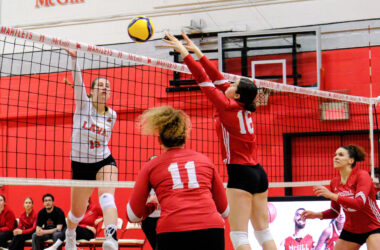It’s a Friday night, and all you want to do is order pizza and watch an NFL game live with some close friends. As a student on a tight budget, however, finding access to the games you want to watch can prove difficult—and sometimes even impossible—without a cable plan. Some students have access to their families’ cable information, but many more find themselves out of luck on game night, likely spending the rest of the evening trying to access a low-resolution, stuttery, illegal stream.
Live sports are as popular as ever, but as our media consumption gradually migrates from the family TV to our own personal devices, watching sports through cable television is becoming more and more antiquated.
In the United States this year, only 56 per cent of households have a cable plan, down from 76 per cent in 2015. This dramatic cable-cutting wave is even more pronounced among young adults, with only 34 per cent of people aged 18-29 shelling out cash on a monthly plan. As this younger generation ages into their prime spending years, cable television will likely die out, and with it the large media companies that broadcast our favourite sports.
The decline of younger viewership is already apparent in nearly every major North American sport; the average NHL viewer’s age is 49, up from 42 in 2006, and the average baseball viewer is 57, up from 52. This trend reflects the generational lag in sports viewership: Younger viewers are just as engaged in sports, but have instead turned to digital sports media commentary to satisfy their craving. Platforms such as Youtube, TikTok, and podcasts, have seen tremendous growth in the past decade.
The mode of delivery won’t be the only thing that changes. Because live sports have such high viewership, broadcasts are meant to appeal to as many people as possible. But content creators on online platforms are gaining followers thanks to their unique approaches to sports analysis, challenging the generalized commentary inherent to larger networks. While this broad strokes approach is engaging for those who are already invested, it fails to draw in new viewership. Now that most people own a device, the potential for more niche, individualized live sports broadcasting is virtually untapped. Exclusive broadcasting contracts still held by companies like ESPN, TNT, and Fox Sports are the only barriers preventing this new wave of sportscasting from dominating the industry.
Nearly every major sports-casting contract is ending in the next decade. While it is possible that companies like ESPN will retain some of their contracts, it is just as possible that huge tech corporations like Google or Amazon, who have already dipped their toes in the streaming pool, will spend a small fortune to acquire exclusive rights to stream games how they please.
If one of these tech giants manages to secure streaming rights, the way we consume live sports will undoubtedly change forever. Streaming services like Youtube Live and Twitch have the capability to individualize content for millions of people. Audience segmentation is something that Spanish Football league La Liga has experimented with, bringing various influencers to commentate on soccer games—to great success. Allowing already established streamers, such as xQcOW or HasanAbi, to cast sporting events could draw in an entirely different demographic to the sports ecosystem and could make viewing games—many that would be otherwise uninteresting, such as blowouts or regular-season games—engaging in an entirely new way.
As we all gradually move further into the digital world, it is only natural that things will change. Watching sports games on our laptops is just the beginning—segmented monetization and new commentating styles will foster unique, small communities in these digital spaces.







